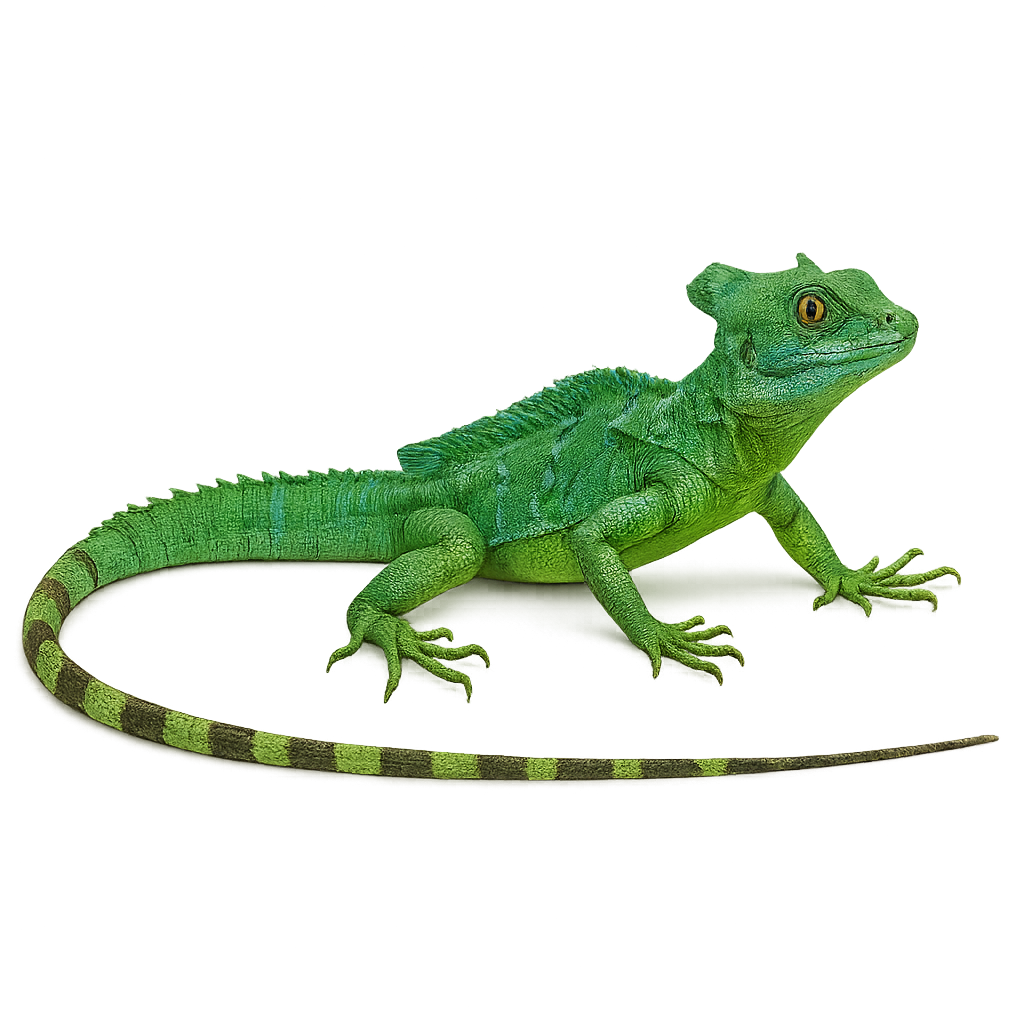Your wildlife photography guide.
Explore the green crested basilisk in detail, study its behavior, prepare your shots.
Where to observe and photograph the green crested basilisk in the wild
Learn where and when to spot the green crested basilisk in the wild, how to identify the species based on distinctive features, and what natural environments it inhabits. The WildlifePhotographer app offers tailored photography tips that reflect the green crested basilisk’s behavior, helping you capture better wildlife images. Explore the full species profile for key information including description, habitat, active periods, and approach techniques.
Green crested basilisk
Scientific name: Basiliscus plumifrons

IUCN Status: Least Concern
Family: CORYTOPHORIDAE
Group: Reptiles
Sensitivity to human approach: Suspicious
Minimum approach distance: 5 m
Reproduction period: October to December
Incubation: 30-35 jours
Births: October to December
Habitat:
Tropical rainforests, riverbanks, wooded areas
Activity period :
Active during the day when temperatures are favorable, often seen basking in the sun.
Identification and description:
The Green Crested Basilisk is an impressive species native to the tropical forests of Central America. This lizard is famous for the distinctive crest on its head and back, as well as for its ability to run on water, earning it the nickname 'Jesus Christ lizard.' It uses this ability to escape predators by running at high speed across shallow water surfaces. Primarily arboreal, it spends much of its life in trees and bushes, where it feeds on small insects, fruits, and flowers. This lizard is also known for its bright green color and distinctive patterns.
Recommended lens:
200 mm – adjust based on distance, desired framing (portrait or habitat), and approach conditions.
Photography tips:
Photograph the Green Crested Basilisk from a distance using a telephoto lens, especially when it is moving quickly in its natural habitat. Use soft lighting to capture its vibrant colors and distinctive crest. Be patient and try to photograph the animal when it is running on water, a spectacular behavior that perfectly showcases its agility. Also, capture it when perched on a branch or rock in the trees.
The WildlifePhotographer App is coming soon!
Be the first to explore the best nature spots, track rutting seasons, log your observations, and observe more wildlife.
Already 1 432 wildlife lovers subscribed worldwide

